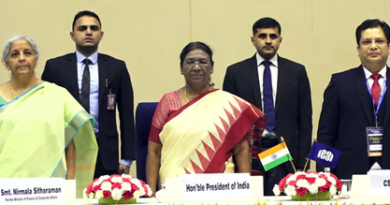Top 6 Digital Marketing Trends for Healthcare in 2022
By Aashish Kumar Jain
New Delhi, Dec 12 : Maintaining promises to customers’ requirements in the digital age requires more than just business acumen and financial resources. Businesses in this digital age need to modernise their thought processes and operational procedures to foster growth and satisfaction. One of the first steps toward igniting growth and innovation in modern society is the adoption of digital marketing channels rather than sticking with traditional ones.
This article will examine the most recent developments in digital marketing that are helping companies keep their promises to customers. These latest advancements in the field of digital marketing also modernise businesses and bring a novel way of doing business in the current climate.
Artificial Intelligence
Artificial intelligence is the process of developing computer systems that are intelligent and capable of performing tasks similar to those performed by the human brain (AI). Businesses can utilise AI to determine the demand and needs of their clients. Furthermore, it may be utilised to track customer purchasing trends and give a solution in order to design a marketing plan. Persado, an AI assistant for writing content, has been embraced by large firms like JP Morgan and Chase, and many more are going to add AI to their toolkit. AI is perfectly efficient, precise, and economical.
Metaverse
Metaverse, as its name suggests, refers to an immersive 3D virtual realm, shared with different users, that spans digital platforms and merges with the physical world. It is presently owned by Meta or Facebook. It is the idea of a digital environment where real and virtual worlds combine to produce a novel and highly promising universal experience. The hype around the Metaverse is well-deserved, and firms are planning to incorporate this virtual environment into their 2022 digital marketing plans. This is partly due to the possibility of introducing a completely new set of performance measures. The potential is enormous, even though we haven’t yet reached the pinnacles of marketing in such a place!
Livestream Commerce
In India, Livestream commerce is still a relatively new marketing idea, but it has already grown into a $1 billion industry in China. Brands choose social media channels to advertise their products live, and viewers can buy the things right away. Thanks to Instagram’s Shop feature, brands may use the “Show Now” button on live video content to save customers’ time. One of the top digital marketing trends for 2022 is Livestream commerce since it has shortened the time it takes to convert consumers from watching an advertisement to buyers.
Augmented Reality
In an interactive experience known as augmented reality, a real-world environment is made to come to life with the help of computer-generated perceptual data.
It comprises three crucial parts:
. Real-time interaction
. A fusion of the real and virtual worlds
. Accurate 3D registration of both real and virtual objects
While virtual reality generates conversation and excitement among users with its vast sci-fi concepts, augmented reality is far more persuasive from a marketing standpoint. Market share predictions from experts indicate that AR will continue to outperform VR. As technology develops more quickly than ever, future trends will see a tremendous increase in brands learning about useful applications for AR.
Programmatic Buying
Programmatic ad buying is the process of acquiring digital advertising using software. Instead of using the traditional method, programmatic buying replaces human negotiation, queries for quotations and bids with algorithms and machines. Programmatic advertising is automated by AI so that advertisers can more precisely target certain consumers. A type of programmatic ad buying called real-time bidding allows for quicker and more accurate targeting. Ads can be qualified to be purchased and sold individually, guaranteeing that only users in the target market will see the advertisement. Given its quick growth, programmatic advertising is predicted to make up a sizable share of all display advertising in the upcoming years.
Voice Search Optimisation
Consumers are increasingly conversing with their smart devices as a means of brand interaction and informational research. Currently, voice searches account for 50% of all searches, according to estimates. As the accuracy of voice recognition technology improves, more people are becoming aware of how voice commands might enhance their daily lives. Voice Search, a feature that all of our smartphones gained around 2014, is exploding this year for a variety of reasons. First of all, smart speakers are gaining popularity. Twenty percent of households have purchased smart speakers like the Google Home or Amazon Alexa. The adoption of voice-activated gadgets is a crucial indicator of how people are starting to adjust to this new technology.
Second, Google asserts that voice search is 95 percent accurate. Voice search is more practical now that the results are more precise. The process is now more individualised and engaging as a consequence of improved precision that more closely matches what you request and the simplicity of utilising your voice to obtain results.
By 2023, voice search results are expected to account for 50% of all online sales, which is possibly the most significant prediction. There is a $40 billion opportunity for digital marketers to profit from. It will be crucial in the future to make sure that your website is voice search ready given the multiple indicators pointing to the arrival of voice search.
(Aashish Kumar Jain, Senior Manager, Marketing & Communication, Telehealth at Apollo Hospitals Enterprise Limited)



